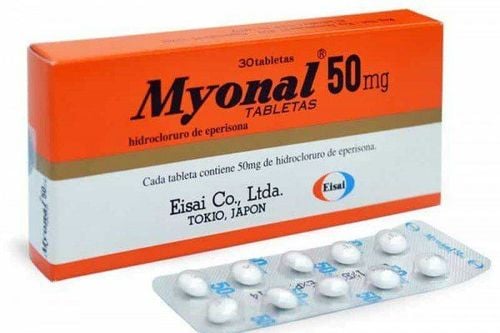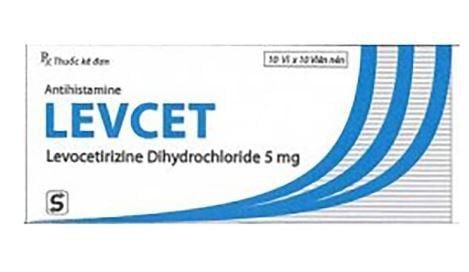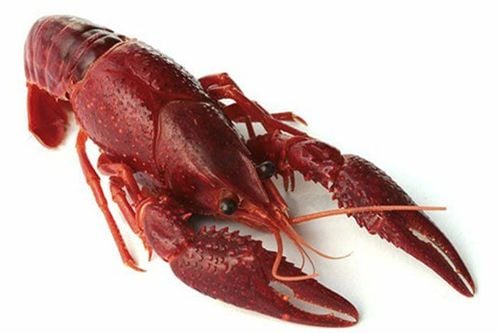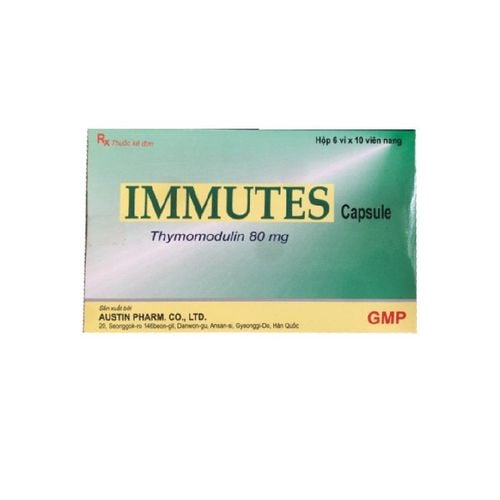This is an automatically translated article.
Seafood is a precious food, rich in nutrients, but it is also the most allergenic food group in cases of food allergies. Manifestations of seafood allergy are very diverse and often occur very quickly, usually only a few hours after eating, in some people only ten minutes. In case of mild allergies, hives, itching, nausea, discomfort and will gradually decrease; In severe cases, in addition to the rash and itching, there is also facial edema, difficulty breathing, vomiting, abdominal pain, ... even leading to death if not treated promptly.1. What is a seafood allergy?
Seafood allergy is an abnormal response of the body's immune system to the proteins of certain seafood. Seafood includes animals such as shrimp, crab, oysters, lobster, octopus, squid, scallops,...
Some people with a seafood allergy will react to all seafood, but There are people who only react to certain types. Reactions can range from mild symptoms such as a rash or a stuffy nose to severe, even life-threatening, symptoms.
Trắc nghiệm dành riêng cho người mắc đái tháo đường: Chế độ ăn của bạn đã hợp lý chưa?
Người bị bệnh đái tháo đường cần phải quan tâm nhiều hơn đến cách tính toán khẩu phần ăn sao cho phù hợp với nhu cầu và tình trạng sức khỏe. Nếu chưa rõ, bạn có thể tìm hiểu kỹ hơn thông qua bài trắc nghiệm ngắn sau đây.2. What causes the body to be allergic to seafood?
The cause of seafood allergy is an overreaction of the immune system. The immune system views seafood proteins as harmful, leading to the production of antibodies to that protein - the allergen. When people with seafood allergy are exposed to allergens, the immune system releases histamine and other chemicals that cause allergy symptoms such as:
Rash, itching or eczema; tingling in the mouth; swelling of the lips, face, tongue, and throat or other parts of the body; Wheezing, stuffy nose, or trouble breathing; Abdominal pain, diarrhea, nausea or vomiting; Dizziness, lightheadedness, or fainting. A seafood allergy causes a severe, potentially life-threatening reaction called anaphylaxis. An anaphylactic reaction to seafood or any cause requires urgent medical attention and treatment. Signs and symptoms of anaphylaxis include:
Throat swelling or tightness in the throat making breathing difficult;
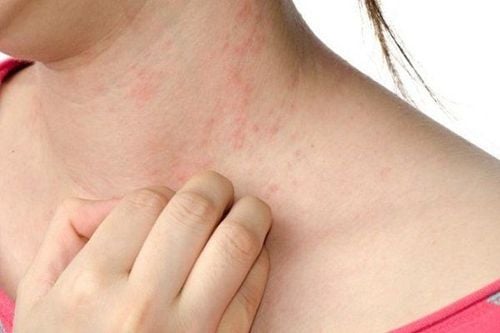
Cổ họng bị sưng do bị dị ứng hải sản
Shock with a severe drop in blood pressure; Rapid pulse, dizziness, lightheadedness or unconsciousness. You are at risk of developing a seafood allergy if someone in your family also has a seafood allergy. Seafood allergy can appear at any age but is more common in adults, especially women. In children, seafood allergy is more common in boys.
3. What to do if you have a seafood allergy?
Seafood allergy occurs only in a small number of people with a predisposition to these foods. People who have had a seafood allergy need to keep in mind the following notes:
If you are allergic to any type of seafood, you should avoid using it again. For example, if you are allergic to shrimp or crab, oysters, octopus, it is best not to eat these seafood; When discovering that you or a loved one has a seafood allergy, the first thing you should do is induce vomiting to push the allergenic food out of your body; When an allergy occurs, you can mix a little honey with warm water to drink, because in honey there are some vitamins that reduce itching caused by seafood allergy. Or when you have a shrimp allergy, you just need to mix a cup of warm lemon water to drink and the allergy will gradually decrease; If you see a rash on the skin or full stomach, abdominal pain due to seafood allergy, you just need to smash a small ginger branch to mix with hot water, wait for the water to cool down and drink it, you will feel more comfortable; Drink 1.5 to 2 liters of water per day to reduce allergy symptoms, especially seafood allergy. Not only that, water also helps to purify the body, making you healthier; For cases of mild allergies such as acute urticaria, itching, runny nose, sneezing...), just use antihistamines such as: phenergan, cetirizine, chlorpheniramine, loratadine... to relieve symptoms. On the skin can apply soothing cream, anti-itch with methol, phenol, zinc sulfate, but the patient must not scratch because the more scratching, the more itching, increased papules; In severe cases, the patient must be taken immediately to the hospital for anti-allergic drugs and appropriate treatment. In particular, do not indiscriminately use anti-allergic drugs without a doctor's prescription; With more severe seafood allergy, it is necessary to combine antihistamines as above to quickly eliminate allergy symptoms in combination with several drugs orally or by injection or infusion, as directed by the doctor.
4. Prevention of seafood allergy

Ăn hải sản chín phòng ngừa dị ứng
The best prevention of seafood allergy is to eat cooked and drink boiled; Absolutely avoid eating squid or other types of sea fish that are still alive, rare or undercooked, especially salmon, sardines, mackerel... Do not eat seafood that has been processed for a long time; Do not eat dead shrimp, crabs, oysters and mussels. Especially the longer the crabs die, the more histamine is produced, the more susceptible they are to allergies and poisoning when eaten; Do not eat seafood with foods rich in vitamin C because seafood contains large amounts of pentavenlent arsenic. Normally these substances are not harmful to the body, but if eaten with a large amount of foods rich in vitamin C, arsenic pentavenlent will convert to arsenic trioxide causing acute arsenic poisoning, if severe, can be dangerous to human health. network; Seafood has welding properties, so when eaten, it is best to avoid eating with other types of welding foods such as water spinach, cucumbers, watermelons, pears or carbonated drinks, cold water... because easily cause discomfort, bloating and indigestion; Should not eat seafood caught in red tide areas, which can carry toxic algae and cause poisoning, especially bivalve molluscs such as mussels, oysters, clams,...; When eating strange seafood dishes, you should try them one by one; For children, it is necessary to be careful when feeding children seafood because the child's immune system is not yet complete, so the risk of allergies and poisoning of the baby is also higher. Absolutely do not let your baby try strange seafood. Even with common seafood, parents should only let their children try to eat a little, if it is safe to eat then increase; Avoid eating at seafood restaurants or shopping at fish markets. Some people react even when they breathe in steam or cooking vapors from shellfish. Cross-contamination can also occur in establishments that serve seafood; Read food labels carefully as some foods contain ambiguous ingredients such as “seafood flavor”, “fish source”; Let everyone know that you are allergic to seafood. Seafood allergy is a common condition in many people. Allergies can have only a few mild manifestations such as itchy rash, swelling, but can also be life-threatening. Therefore, people with seafood allergies should be careful in choosing foods and know how to handle them quickly when an allergic reaction occurs.
Please dial HOTLINE for more information or register for an appointment HERE. Download MyVinmec app to make appointments faster and to manage your bookings easily.




